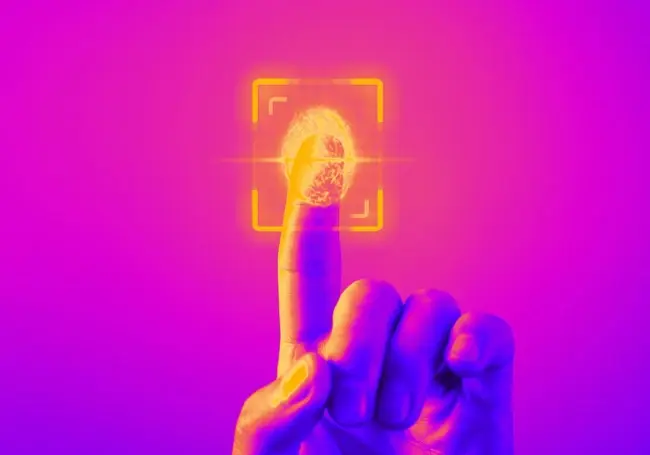From email to social media, streaming, and beyond, we have to manage more logins, and therefore more passwords than ever. Simultaneously there are more data breaches revealing passwords than ever before.
Enter passwordless authentication
You’re probably using elements of passwordless authentication already, without even realizing.
In this article we’ll explore what password authentication is, how it works and if its safe to use.

What is Passwordless Authentication?
Passwordless authentication is exactly what it sounds like, a way of verifying your identity without using a password.
The example you’re probably most familiar with is biometrics. This passwordless authentication method is used to verify your identity by your fingerprint, facial recognition, or voice recognition.
Most modern smartphones allow for some element of biometric authentication such as FaceID or TouchID whilst banks often allow for voice recognition to verify telephone account access.
Security keys are another popular example of passwordless authentication. These physical devices generate unique single use codes that can be used to log in to your account.
One-Time Passwords, or OTPs, are similar, except they send a code to an app or email address, rather than a separate physical device.
How does Passwordless Authentication Work?
Passwordless authentication works by eliminating the need for a password and replacing it with a different verification method.
Each of these methods work a little differently, for example, biometric authentication works through digitizing a physical aspect of you.
Fingerprint recognition uses your unique fingerprint to verify your identity. First a sensor captures an image of a finger which is converted into a digital format The system extracts unique features from the fingerprint image, such as the ridge endings, bifurcations, and core points. These extracted features are then used to create a digital template, which is a mathematical representation of the fingerprint. When a user tries to authenticate, their fingerprint is captured and compared to the stored templates.
For authentication like security keys the user requires a physical device that generates a unique code that can be used in place of a password.
Is Passwordless Authentication Safe?
Passwordless Authentication is considered to be safer than traditional password log ins.
Traditional passwords are vulnerable to phishing attacks, brute-force attacks, and data breaches. They are also easier to guess using social engineering techniques.
It also eliminates the need to remember multiple different complex passwords, or to put your trust in one password manager.
However, passwordless authentication is not 100% foolproof and there are steps users must take to ensure robust cybersecurity.
Stay vigilant and avoid clicking on suspicious links or downloading attachments from unknown sources.
Even with passwordless authentication, consider using multi-factor authentication for an extra layer of security.







Comments ( 0 )